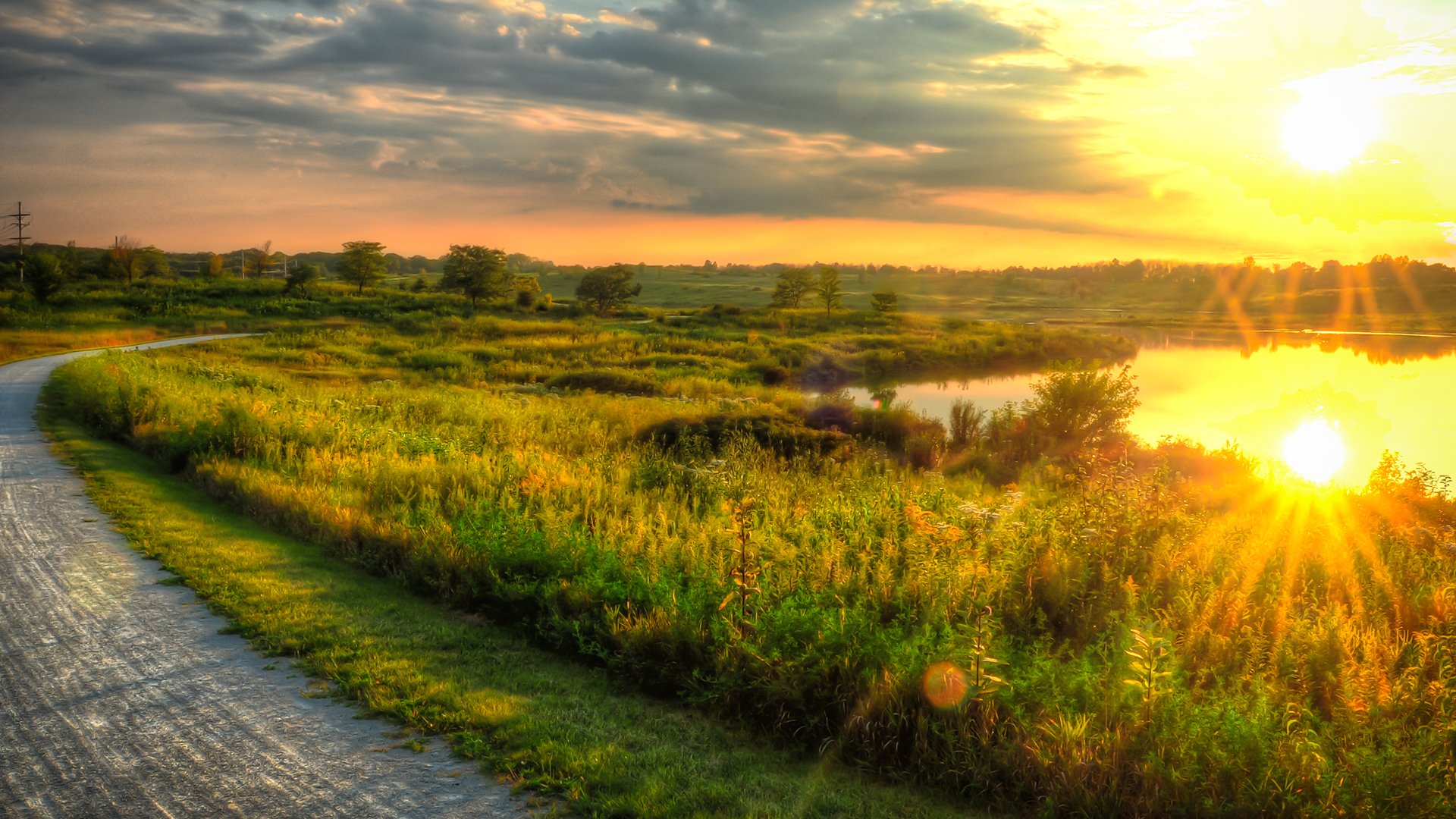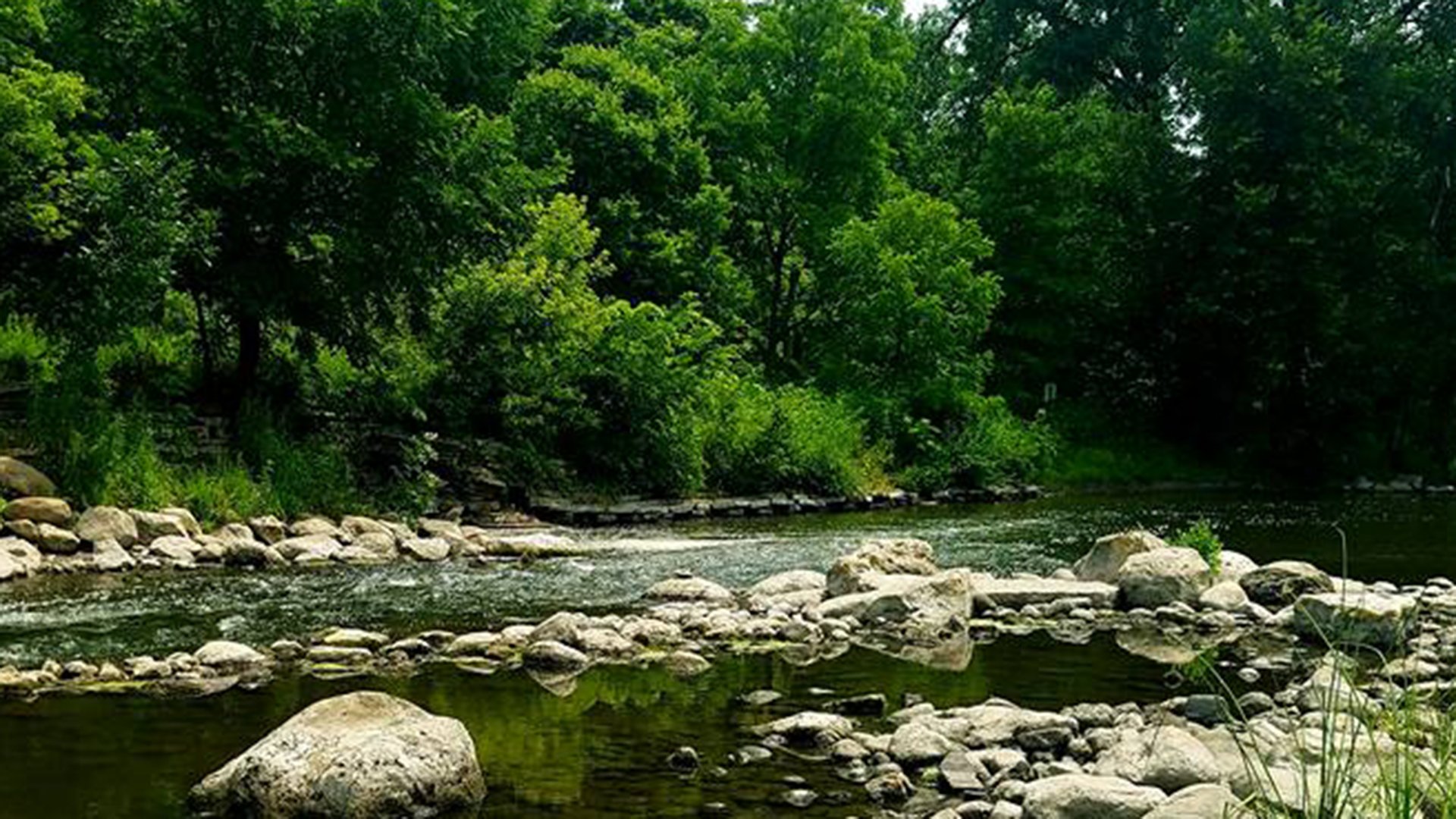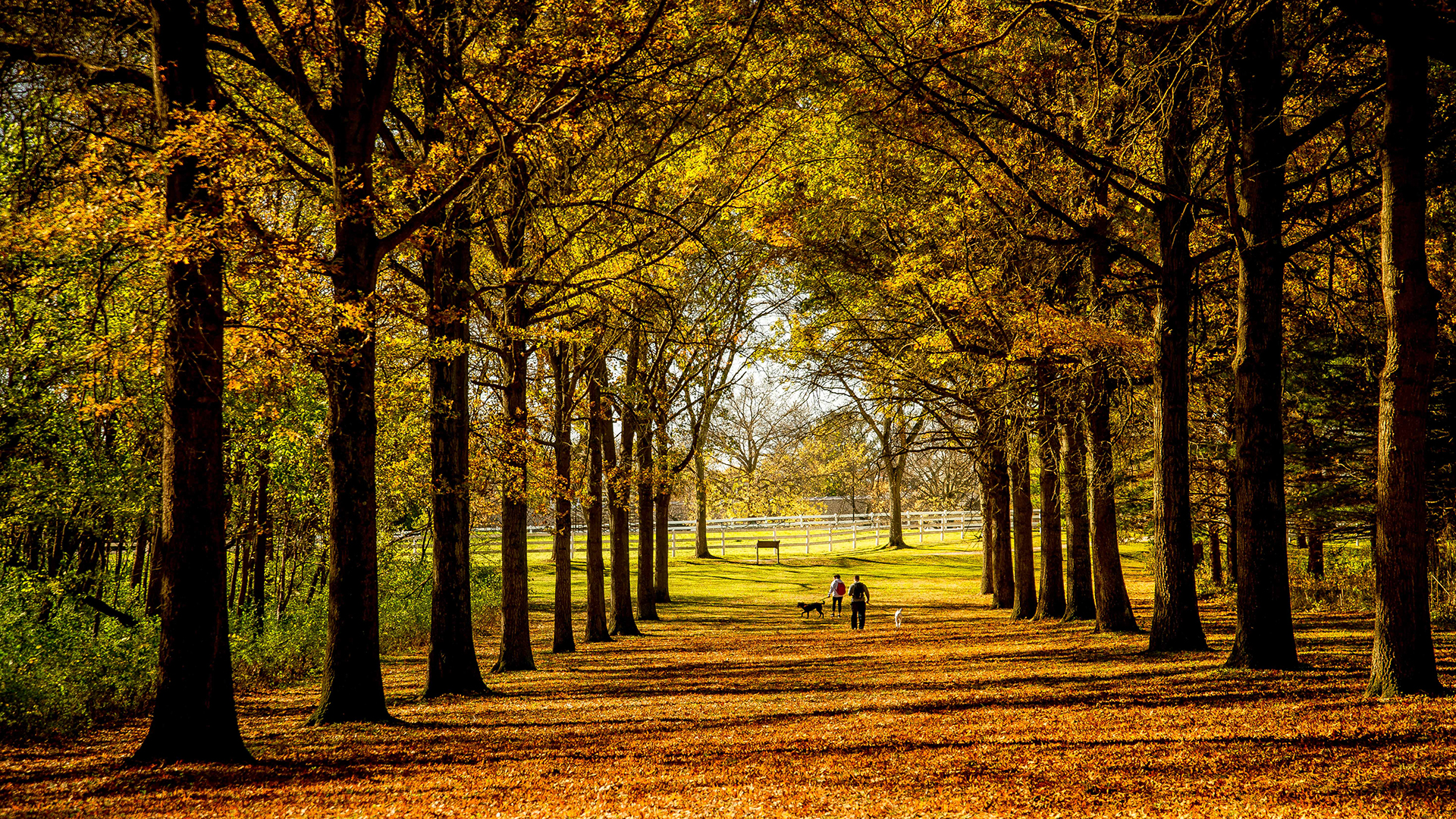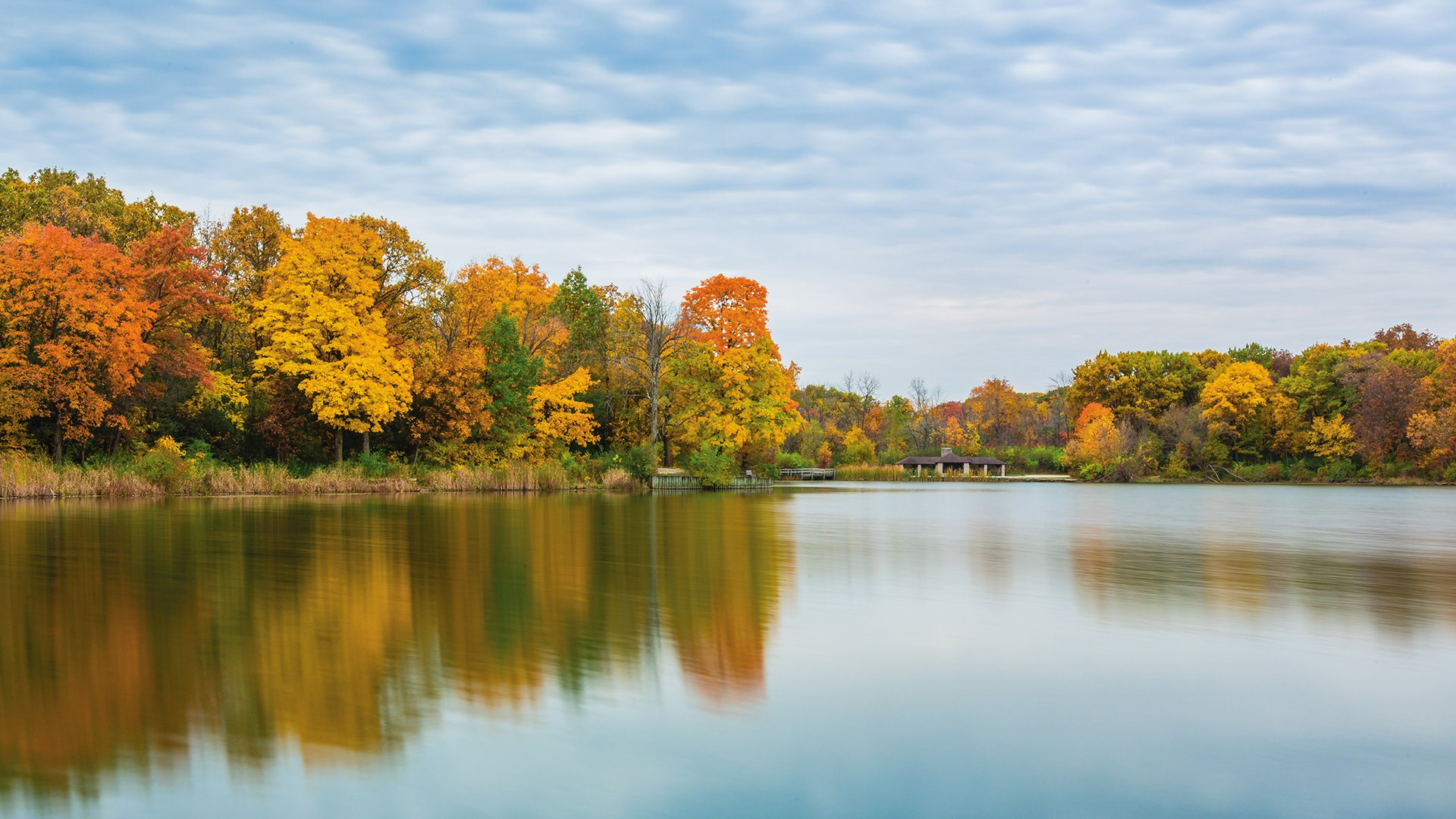
Herrick Lake
Wheaton
A habitat improvement project will cause temporary trail closures. Signs will be posted when this occurs. Learn More
Maps
The main entrance is on the south side of Butterfield Road 0.2 mile east of Herrick Road.
The secondary parking lot is on the east side of Herrick Road 0.25 mile south of Butterfield
Road.
Hours
The preserve is open one hour after sunrise to one hour after sunset.
General Info
Dogs are allowed at the forest preserve but must be on leashes under 10 feet long. Alcohol is prohibited. Read our complete rules and regulations.
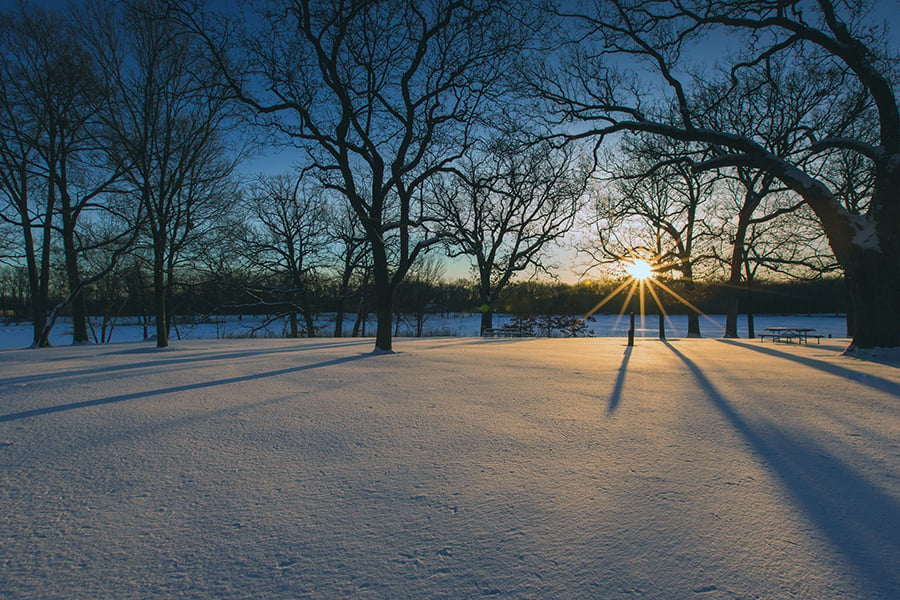
Things To Do
Hikers, bicyclers, horseback riders and cross-country skiers can enjoy more than 7 miles of trails, including a section of nationally designated Danada-Herrick Lake Regional Trail. A path around the lake connects both parking lots to the picnic grounds and the trailhead, and additional trails cut through central and southern parts of the preserve.
If you're bringing a horse trailer, please park it at the south lot on Herrick Road and do not ride along the lake trail or in developed recreational areas, such as picnic sites or the grounds around the youth-group cabin.
Explore Herrick Lake from the water by renting a canoe, kayak or rowboat by the hour May – September.
Fish for largemouth bass, channel and flathead catfish, black bullhead, crappie, sunfish and carp along the 22-acre Herrick Lake. Ice fishing is not allowed on Herrick Lake due to aerators in the lake to control algae blooms.
Anglers 16 or older who are not legally disabled must carry valid Illinois fishing licenses. Lake maps and regulations, including creel limits and minimum lengths, are on our Fishing page.
Herrick Lake has dozens of picnic tables and grassy areas where you can spread a blanket. Ground fires are not allowed, but you can bring grills. (The preserve has hot-coal containers for charcoal.)
Groups can reserve the east, west and south shelters and the west picnic area as well. Details are on our Picnicking page.
Host your birthday party, field trip, or corporate outing at Herrick Lake!
We offer packages on weekdays from the Tuesday after Memorial Day through the Friday before Labor Day. Visit our Have It at Herrick page for details.
Natural Features
The 887-acre Herrick Lake is one of the Forest Preserve District’s most popular preserves.
Herrick Lake is home to an impressive variety of wildlife. Ecologists have recorded more than 254 types of year-round and migrating wildlife among the preserve’s 470 different types of plants.
In the mature upland woods, stately 150-year-old white, red, and bur oaks provide habitat for animals like woodpeckers, squirrels, and owls.
White-tailed deer and coyotes roam through adjacent fields of European grasses, where dickcissels, savanna sparrows, bobolinks, and eastern meadowlarks nest among the fescues. Slowly emerging within these fields are young planted forests of American elms with understories of smaller maples, oaks, lindens, and hickories. Viburnums, dogwoods, roses, and blackberries are common in this immature upland woods, which attracts black-crowned night herons, eastern wood peewees, and American woodcocks.
Along the forest preserve’s pothole marshes and streams, silver maple and buttonbush grow. Raccoons, woodchucks, northern orioles, wood thrushes, and various frogs and toads dwell in this area, which is seasonally covered with colorful swamp buttercup and wild iris. Herrick Marsh, which lies in the middle of the forest preserve, supports community of reeds, a draw for eastern tiger salamanders, northern leopard frogs, pied-billed grebes, blue-winged teals, red-winged blackbirds, minks, and muskrats.
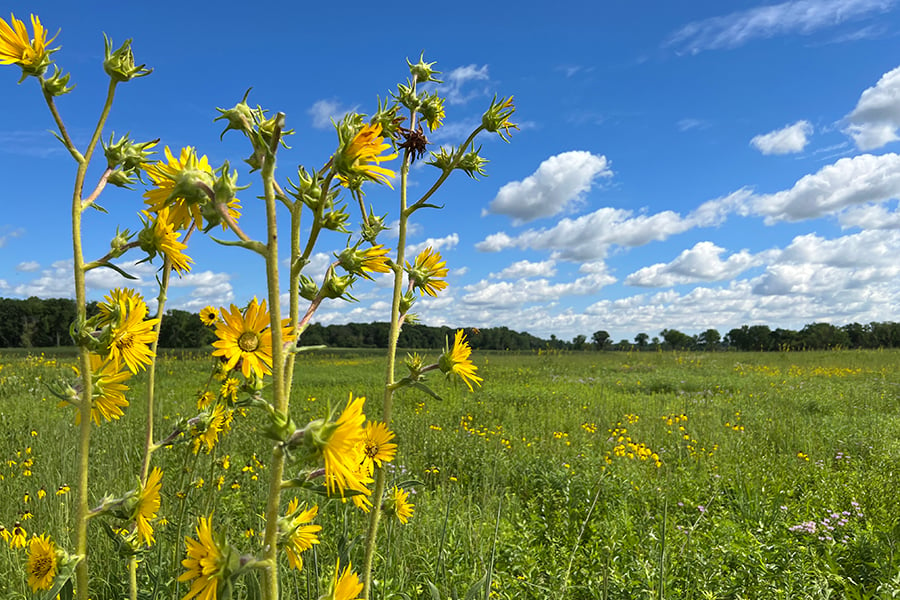
History
After the retreat of the Wisconsin Glacier, the land that is now Herrick Lake Forest Preserve grew into prairies with scattered woodlands. For thousands of years, different groups of indigenous people passed through the area, some to hunt and move on, others to settle for various periods of time. The last of these groups to call this land home was the Potawatomi, who had settled in the area by the late 1600s. Their well-traveled trails served as the basis for Butterfield and Warrenville roads.
Around the time of the Treaty of Chicago in 1833, which moved the Potawatomi west of the Mississippi River, Ira Herrick moved near the small settlement of Wheaton and built his homestead in a densely wooded parcel that surrounded a small marshy lake. This marked the beginning of the land’s agricultural period, which lasted more than 100 years. Old fencerows, woodlot edges and fields of European grasses still stand in the preserve as remnants of this era.
In 1925, the Forest Preserve District of DuPage County purchased 90 acres of the original Herrick homestead. From the mid-1950s through the 1970s, additional scattered acquisitions expanded the preserve.
Today, Herrick Lake is a substantial link in a 3,700-acre chain of open space that includes Danada, Warrenville Grove, St. James Farm and Blackwell forest preserves.
